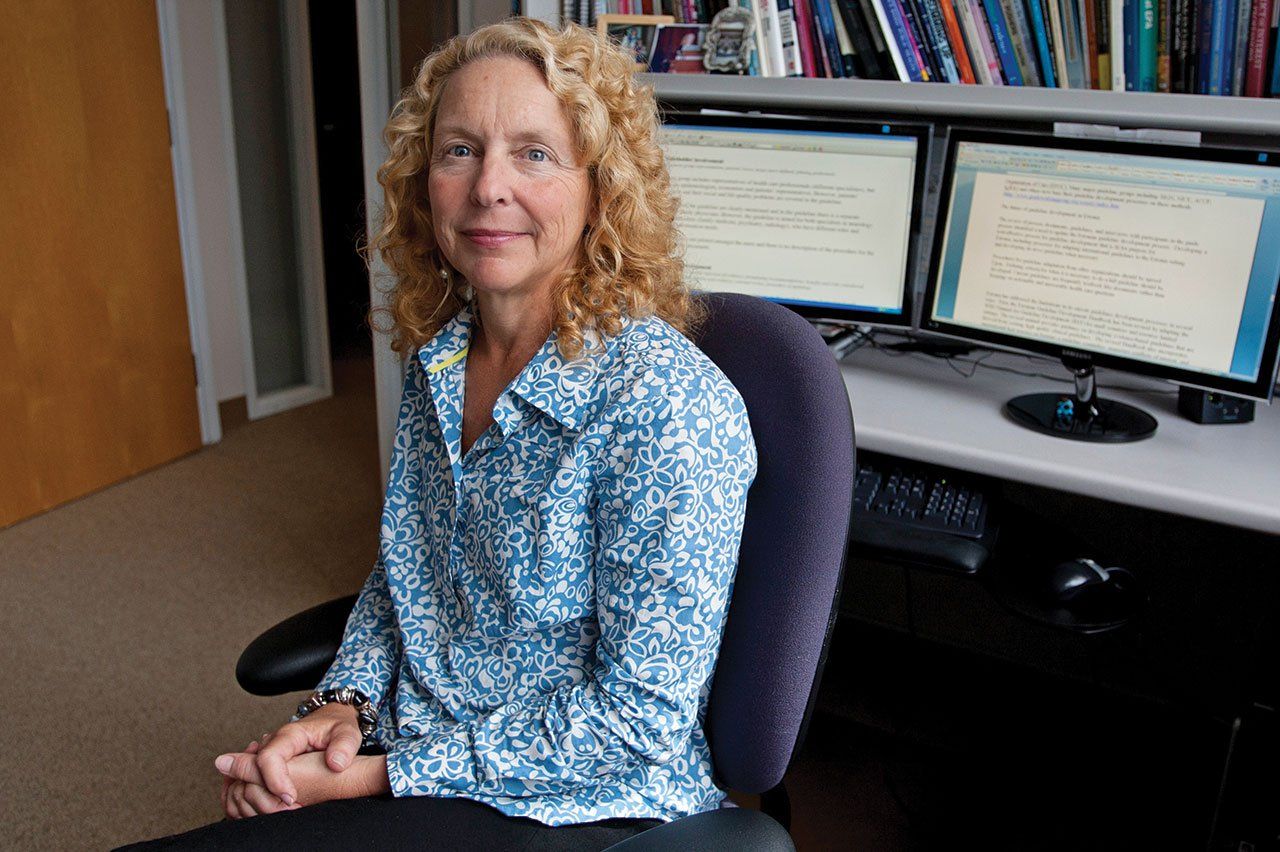
Trial Buster
Q&A with Lisa Bero, PhD, expert on industry bias in clinical trials

Photo: Cindy Chew
Lisa Bero, PhD, a mild-mannered professor of clinical pharmacology, has spent her career policing the way we conduct research on drugs and clinical interventions. Bero also heads the World Health Organization Collaborating Center for Pharmaceutical Research and Science Policy.
You’ve just published a paper about industry bias in clinical trials that has received a lot of attention. Can you tell me about it?
Andreas Lundh from the Danish Cochrane Center, Joel Lexchin from York University in Toronto, and I published a systematic review of studies that looked at the association of industry funding and research outcomes. We found that if a study was pharmaceutical-industry sponsored, it was 24 percent more likely to have findings that favored the sponsor’s product than if it was sponsored by anybody else.
This is part of your work with the US Cochrane Center at UCSF. What does the center do and what is your involvement there?
I am founder and director of the center. It’s an international nonprofit that produces systematic reviews of health care interventions and clinical trials to promote evidence-based research and practice. Systematic reviews bring all the evidence on a topic together, assess the quality, and then answer a question. I’m really interested in methods – how we better use the evidence to make decisions – so I love the work.
How have the studies you analyzed been biased?
There are a lot of ways to bias a study. I think the best example is unfair comparisons. Here’s a classic case: one industry-sponsored study compared antihistamines. The authors concluded that their antihistamine caused fewer side effects, the biggest being sleepiness. While they gave people a normal dose of their own drug, the dose they were using of the comparison antihistamine was nearly four times what you would normally give somebody. The people on the comparison drug were sleeping all the time.
What’s the second most common form of bias?
Another common example is what’s called “selective outcome reporting.” In one of our reviews, we looked at all drugs approved over a two-year period. We found that 75 percent of the trials submitted to the FDA [Food and Drug Administration] were published. That means 25 percent weren’t. And, of those that were published, not all the data were published. Of course the missing outcomes tend to be the ones that did not show a positive effect of the drug.
Is every part of a study public information?
The FDA releases what’s called their medical and statistical officer reports. It’s not absolutely everything, but it’s more than what you get in the published data.
Why aren’t journal editors picking up on the biases you found?
Journals have a lot of power. Some journals, like the Lancet, are now demanding the protocol of the trial, so if they studied five outcomes, they can check to see that they reported on all of them. The problem is there are just way too many journals out there of variable quality and resources. Some don’t even have paid editors, so a lot slips by.
What are the repercussions of your findings?
Well, I think patients would be shocked if they knew how incomplete the information is that most doctors have about drugs. We’ve analyzed some of the meetings doctors have with drug reps. The reps basically push a drug by focusing on a certain study out of context – you need the whole story.
How can patients and doctors ensure they’re making informed choices?
First, check the acknowledgements section or the funding source section for conflicts of interest. Second, don’t look at a study out of context. People need to know that if you’re talking about the latest randomized controlled trial covered in the Chronicle or the Times, that’s only part of the picture. Go to the Cochrane Center’s website, cochrane.org. We rate studies and have consumer summaries that are available for free. That’ll give you an idea whether there are 10 studies or no studies on a topic.
And third?
When reading a study, ask yourself, “Is the population relevant to me?” For instance, there is a Cochrane review on whether women with breast cancer should have radiation after chemotherapy. For older women it was actually more harmful to add radiation because it hasn’t been shown to extend older women’s lives and there were some adverse cardiovascular events. Yet radiation has been shown to extend the lives of younger women.
The more people become aware of bias, the more political pressure we can apply to the FDA to mandate that more data be freely available.”
While we all work on reading with a more critical eye, is there any movement toward making bias more transparent?
My challenge is to expose bias to the public wherever I can. The more people become aware of bias, the more political pressure we can apply to the FDA to mandate that more data be freely available. There are also discussions about whether patients should participate in clinical trials only if the sponsors agree to make the results publicly available. This way, the data gathered in clinical trials will become a public good and not proprietary information.



